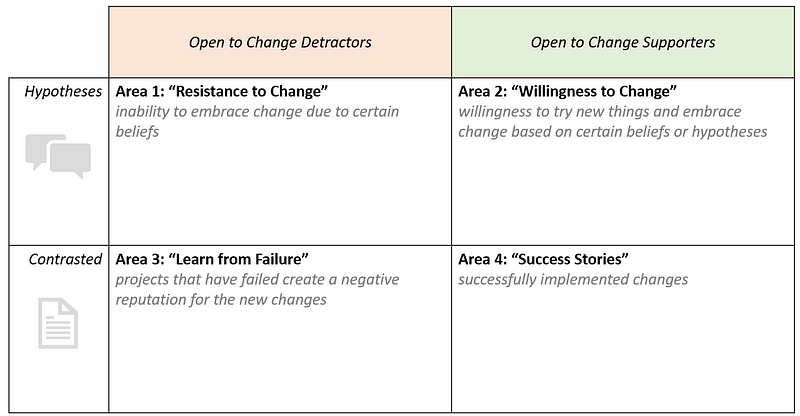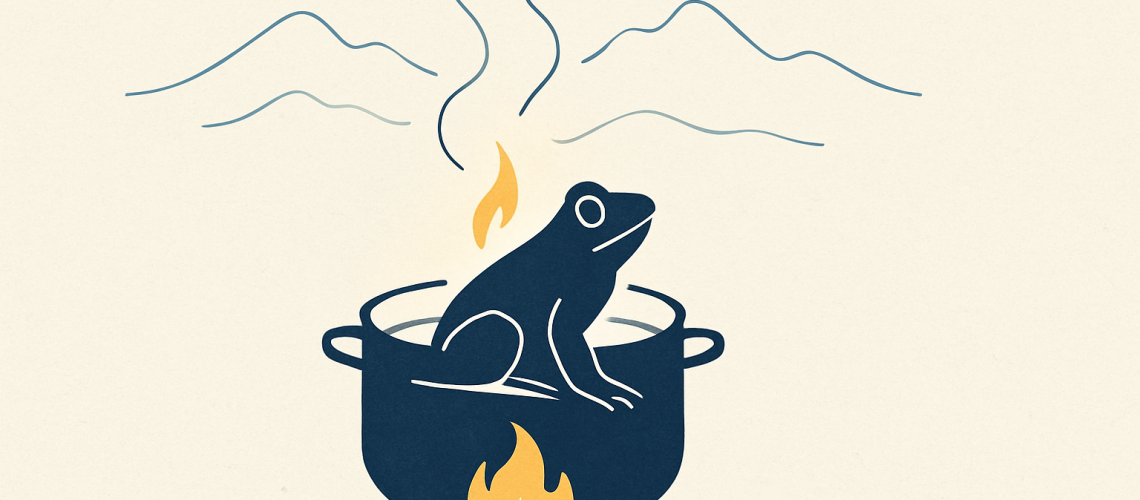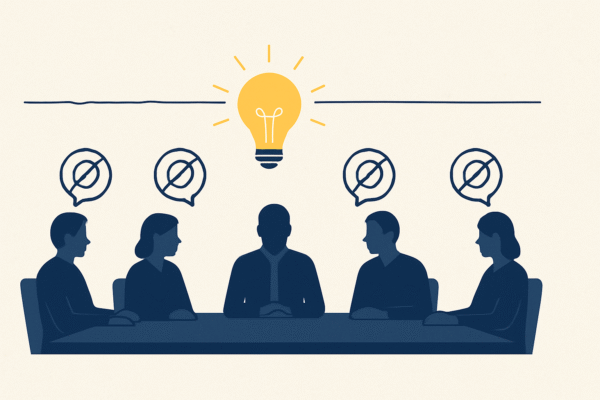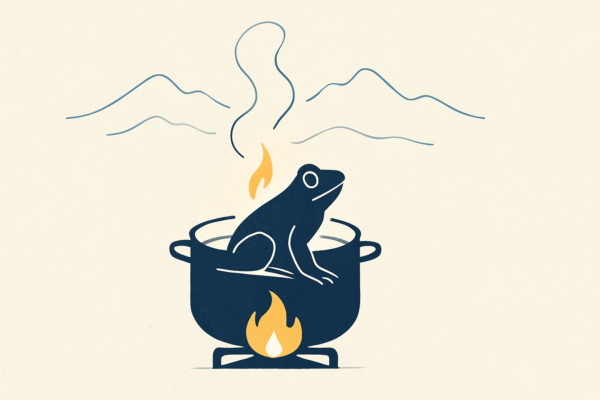“If you put a frog in boiling water, it jumps out. But if you heat the water slowly, it stays until it boils—too late to escape.”
Openness to change fuels innovation and drives efficiency.
Simple as that.
We’re in a world that shifts faster than most companies can react.
Being open to change isn’t a nice-to-have anymore.
It’s the line between companies that grow
and those that fade without noticing the heat rising.
There’s something else important to explore
how people don’t resist change itself,
but the fear of losing what they know.
And how most of us drift between denial, confusion and renewal
without realizing, we’re just moving through the four rooms of change.
But we’ll leave that for another post.
Frog Matrix
This isn’t some fancy slide deck from a high-priced consultant.
It just breaks the organization into four simple zones.
Each one shows a different angle of how open you really are to change.
The idea?
Make the invisible visible.
Turn fuzzy dynamics into clear insights.
So leaders can act, not guess.
The Frog Matrix gives you a picture.
A real visual map of where your team stands
and where resistance is hiding.
It helps you lead change with your eyes open.
1. Spot the problems.
Add cards to each area.
Note what’s working. And what’s quietly sabotaging change from below.
2. Find the action.
For every issue, ask:
What would open this up?
Turn each card into a clear move that boosts adaptability.
3. Make it count.
Not all actions matter the same.
Rank them.
What’s high impact and low effort? Start there.

Area 1: “Resistance to Change”
This is where change hits a wall.
Beliefs, assumptions, stories we tell ourselves
none of them backed by facts, but strong enough to stall progress.
“This is how we’ve always done it.”
Some employees push back.
Not because they’re difficult.
Because change feels like chaos.
Certain teams stay skeptical.
They hear “transformation” and think “trouble.”
Managers cling to old ways.
Not out of stubbornness. Out of habit.
What can you do?
Talk. Honestly.
Open up the space.
Let people voice their doubts—then work through them.
Shine light on the myths.
Bring real data.
Back the change with evidence, not just enthusiasm.
Communicate Crystal Clear.
Misunderstanding breeds fear.
Area 2: “Willingness to Change”
This is the hopeful zone.
People are open. Curious. Willing to try.
They believe change could help—
even if they don’t have all the proof yet.
It’s early momentum.
Not certainty, but belief.
This is the hopeful zone.
People are open. Curious. Willing to try.
They believe change could help
even if they don’t have all the proof yet.
It’s early momentum. Not certainty, but belief.
Employees jump into pilot projects with energy.
They want to see what works. Some people or teams are out hunting for ways to improve.
Provide dedicated resources, such as time, budget, and tools, to support experimentation of new ideas.
Establish recognition programs to acknowledge and reward to these guys.
Area 3: “Learn from Failure”
This is where change carries baggage.
It’s not that people hate change.
They’ve just seen it crash before.
Failed rollouts.
Overhyped “transformation” projects.
Big talk, no follow-through.
Now every new idea comes with a warning label.
People roll their eyes before they even hear the plan.
It’s not resistance.
It’s disappointment dressed as caution.
You’ll see it in the stories people tell.
“We tried that before.”
“It didn’t work.”
“Remember the mess with the last system?”
Past failures leave scars.
The kind that make teams flinch at anything new.
So what can you do?
Start by digging into the past.
What really went wrong?
Get specific. Own the details.
Then use it.
Turn those failures into lessons.
Bake them into your next move.
And this time, do it right.
Plan well.
Communicate clearly.
Check in often.
Build trust by showing change can land clean.
Area 4: “Success Stories”
This is where change worked.
Where teams didn’t just try something new they nailed it.
You’ll find the success stories here.
The upgrades that actually delivered.
The shifts that made things faster, smoother, better.
Change wasn’t chaos.
It was progress.
And people felt it.
This is where change paid off.
A team fixed a process.
Things got faster.
Someone added a new tool.
Customers were happier.
A bold move.
More revenue.
Celebrate it.
Tell the story.
Make success visible.
Reward the doers.
Share what worked.
And keep the momentum alive.
🎯Remember
Change doesn’t warn you.
It just happens.
You either see it coming
or feel it too late.
Adapt early.
Or get boiled slowly.
And if writing it all out feels like too much work
ChatGPT can help you ask the right questions
and spark ideas on what to do next.
Want the prompt I use?
Just ask. I’ll send it over.






